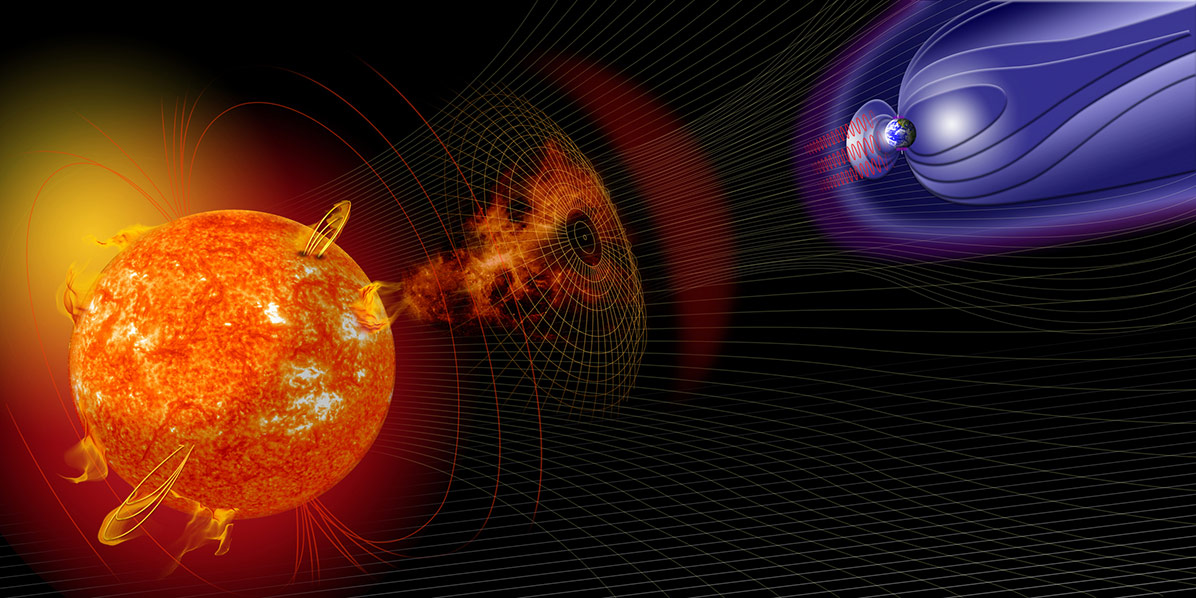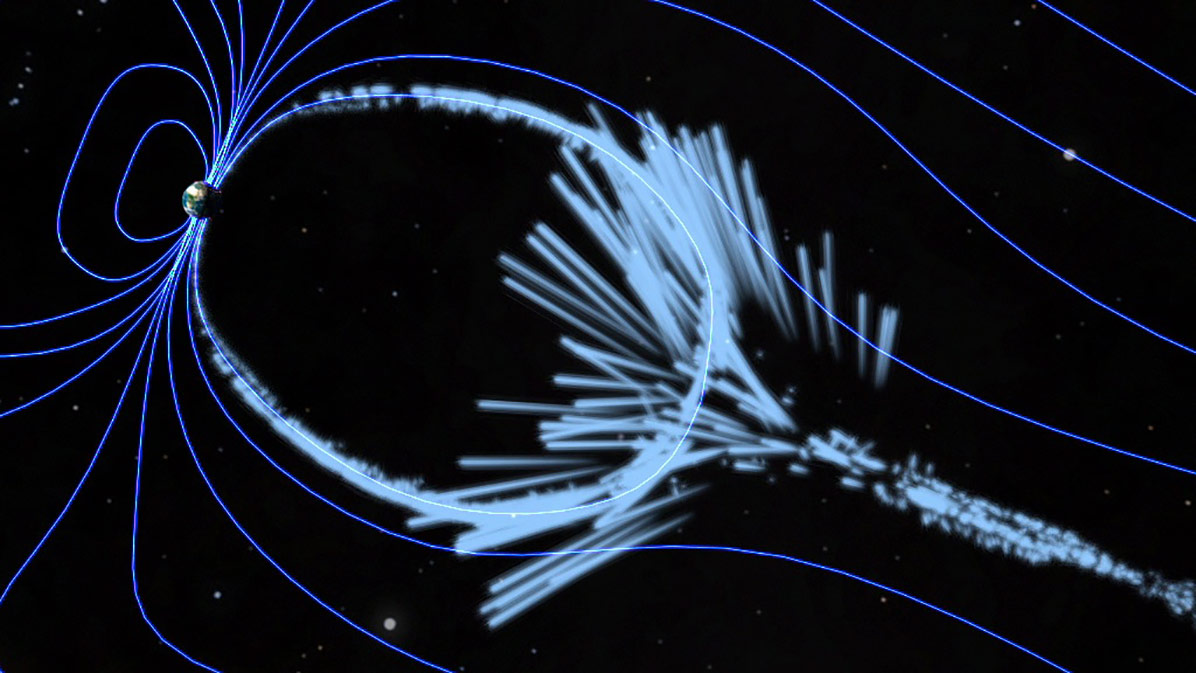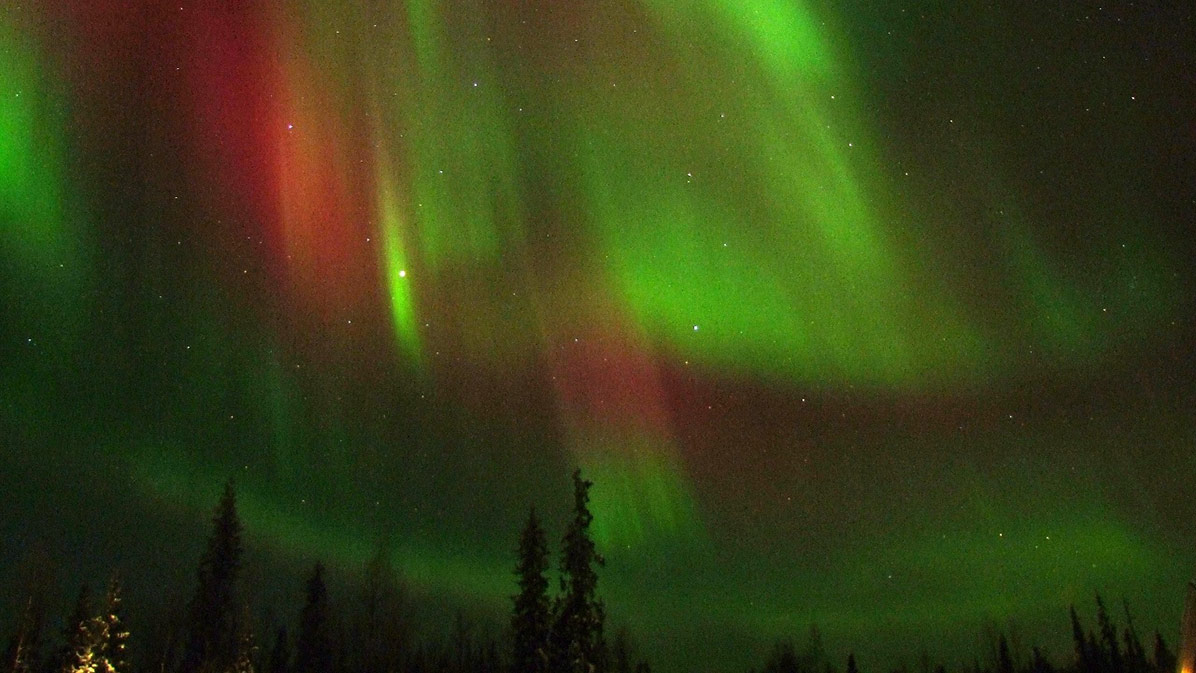Geomagnetic Storms
A worldwide disturbance of the Earth’s magnetic field, associated with solar activity.

The solar wind fills the solar system and the Earth is constantly bombarded by this steady flow of particles and magnetic field.
Normally, the Earth is well shielded from this matter by its self-generated magnetic field. Sometimes bursts of higher speed and density solar wind are able to create a disturbance in the Earth’s magnetic field and these disturbances can create currents in the upper atmosphere that excite atoms creating the northern and southern lights. This is called a geomagnetic storm.
CMEs are the most dangerous and destructive space weather events. When the Sun produces CMEs that travel to the Earth they can carry magnetic field of opposite polarity to that of the Earth. This in combination with a solar wind enhanced by the CME weakens the Earth’s magnetic field allowing energy to reach the Earth. This creates rapid changes in the Earth’s magnetic field causing a strong magnetic storm. These magnetic storms induce currents on the ground in power grids, pipelines, railway signaling and magnetic fluctuations that effect surveying and drilling for oil and gas.
Another consequence of magnetic storms is heating of the upper atmosphere. This changes the density in the ionosphere disrupting radio signals, in particular satellite navigation systems.
Rattling Earth’s Force Field
A giant magnetic bubble surrounds Earth, shielding our planet from the sheer power of the sun. Invisible to the human eye, the bubble—called the magnetosphere—is fairly round on the side that faces the sun, and then forms long, spaghetti-like strands that trail behind Earth and move in concert with the constant stream of magnetized particles known as the solar wind.
The magnetosphere protects Earth from the brunt of the sun’s energetic outbursts. But some gigantic eruptions of solar material, called coronal mass ejections, can nonetheless compress the shape of the magnetosphere, creating a geomagnetic storm.
During strong geomagnetic storms, the fluctuation of magnetism and electricity near Earth can interfere with communication and GPS satellites, induce electrical surges in power grids on the ground and light up the skies with auroras.
Watch the visualization below to see the shape of the magnetosphere that surrounds and cradles Earth, protecting it from the sun’s explosions.


CREDIT: NASA’s Goddard Space Flight Center

